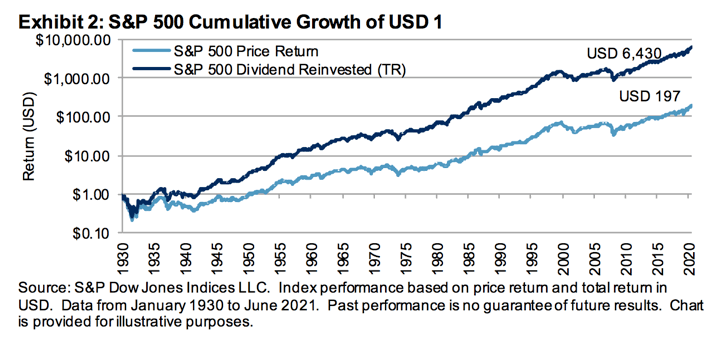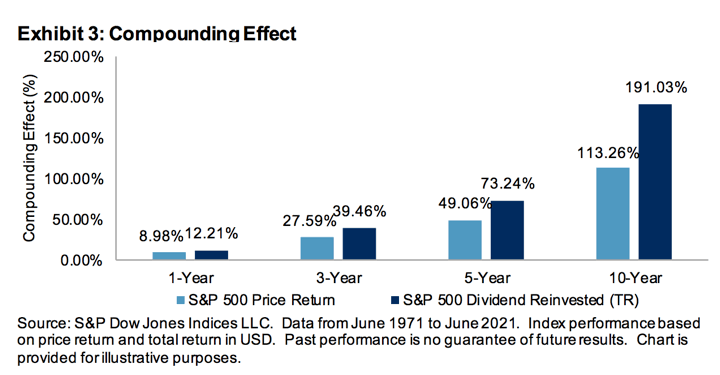My inbox has been seeing an uptick about structured products and fixed indexed annuities that offer “market-linked performance” or “market upside” with “downside protection”. While below is my usual take on these products, I wanted to provide some tools for your own due diligence.
Any time you have some “magic box” that takes the stock market returns and advertises nearly the same high returns without the volatility and risk, you should know that there is no free lunch. You must pay a price.
The thing is, I might actually be okay with that. Insurance companies are in the risk transfer business. There should be some price at which I would pay for this downside protection. You offer me 90% of the stock market’s long-term return but I’ll never lose money? Sold. The problem is that (1) the actual cost is much higher than that and (2) never explicitly clear.
If the annuity industry was willing to strip away the obfuscation and opaque marketing, they could create a standardized product. For example, it might track the S&P 500 total return (no other index) but with a clear set of withdrawal penalties (surrender charges), annual fees, participation rates, etc. As a transparent and commoditized product, insurance companies would have to compete on price, like what we (somewhat miraculously) have with index funds and index ETFs.
Instead, every single fixed index annuity is different with 25 different variables and a complicated contracts with various ways that they can change many those variables in the future. “Point-to-point”. “Rate spreads”. A high “participation rate” will be advertised, but will only apply to custom “index” that was created last Tuesday but backtested to perfection. A 3% monthly cap or 10% annual cap on returns will be quietly added, knowing that the average buyer won’t know that history shows that cap lowers the overall average returns significantly. The “illustrations” will usually include 2001 and 2009. Oh, and they never include dividends from the index they track.
Now, a fellow personal finance writer was sued out of existence by an insurance company, so I will write this carefully. By the way, here are two current rate cards from two examples of popular products here and here. Notice the multitude of options, confusing terminology, and index names that sound kind of familiar but you really have no idea what’s inside.
Now, let’s say a fictional insurance company offers a 6-year fixed index annuity that tracks the S&P 500 index with a 65% participation rate. This is actually a very competitive rate. (Not any other random index. Always look for S&P 500.) Let’s assume straight-up direct crediting without annual or monthly maps.
The total average annual return of the S&P 500 index from 1926 to present (2022) with dividends reinvested is 10% annually. (Source.) So let’s just assume the stock market goes up by 10% a year. The higher the S&P 500 returns, the more this annuity will lag, so we’ll just go with average.
Every single fixed index annuity I’ve ever seen excludes dividends. If you remove dividends, the historical S&P 500 index price-only return is only about 6.1%. Does the average person on the street know this? Is this fact included in the annuity free steak dinner pitch? 🤥
This is a huge deal! Here’s a comparison of $1 invested in the S&P 500 in 1930 with and without dividends. Yes, the final numbers are ~$200 vs. ~$6,000. (Source: S&P.)

Even for shorter periods, the compounding effect of removing dividends is significant:

We haven’t even multiplied by the participation rate of 65% yet, after which you are only left with 4%. You’ve now gone all the way from 10% annual return to only 4%. You could also reach this number by using an average total return of 8% and dividend yield of 2%. You’d still end up with 4% (take the 6% price-only return and multiply by 0.65).
But wait, my principal is protected, so it’s worth it! That just means your minimum return is 0% if the stock market does poorly. But 0% is not the proper comparison point.
The true downside is the guaranteed rates that you are giving up! For example, today you can find a 6-year plain-vanilla MYGA fixed annuity paying 5.40% guaranteed. At 5.40% annually guaranteed, in MYGA worst-case scenario $100,000 will become over $137,000 after 6 years. Meanwhile, the fixed index annuity might only give you… $100,000.
MYGAs are commoditized annuities that compete based on price (and safety rating) and offer the same tax-deferral possibilities. Since they compete on price, they also pay lower sales commissions than fixed index annuities. Would you want to buy something that would pay 4% if long-term averages hold (0% minimum), or 5.4% guaranteed (5.4% minimum)? MYGAs aren’t perfect either, but at least I can explain how any MYGA works very easily.
This is a simple hypothetical illustration to help you realize the high price you might be paying for “upside potential with principal protection”. I understand the desire to avoid market volatility, but there may be cheaper and more transparent ways to get there. My main issue is not that the price is high, it’s that the price is nearly impossible to pin down due to intentional complexity. If we could see price tags, we could comparison shop!
 The Best Credit Card Bonus Offers – 2025
The Best Credit Card Bonus Offers – 2025 Big List of Free Stocks from Brokerage Apps
Big List of Free Stocks from Brokerage Apps Best Interest Rates on Cash - 2025
Best Interest Rates on Cash - 2025 Free Credit Scores x 3 + Free Credit Monitoring
Free Credit Scores x 3 + Free Credit Monitoring Best No Fee 0% APR Balance Transfer Offers
Best No Fee 0% APR Balance Transfer Offers Little-Known Cellular Data Plans That Can Save Big Money
Little-Known Cellular Data Plans That Can Save Big Money How To Haggle Your Cable or Direct TV Bill
How To Haggle Your Cable or Direct TV Bill Big List of Free Consumer Data Reports (Credit, Rent, Work)
Big List of Free Consumer Data Reports (Credit, Rent, Work)
The reason indexed annuities don’t include dividends is that the insurance companies don’t actually buy equities so they don’t earn the dividends. They use a small portion of the policyholders’ premiums to buy options to cover the payouts to policyholders and invest the remainder of the premium to earn profits. I agree with your assessment of these products and don’t recommend them.
I can understand that options contracts don’t include the dividends of the index they track, but if they can buy hedging options for the CreditSuisse LowVol LastTuesday LeftHandedCEOs Index, I’m thinking they could buy options for the S&P 500 Total Return Index (if they really wanted to).
I’d suggest that even the term “fixed index” is intended to confuse investors asking financial advisors for a “fixed income” annuity. What, are there annuities that vary their tracked index over time? No. They could simply be called “index annuities”, but that might reduce the confusion. Confusion and complexity breed dependence, the bread and butter of the financial advice industry.
My father showed me a fixed-income life insurance policy (in Germany) where the policy provider could not even pay the full amount of the interest they had promised. The policy provider had assumed a minimum interest rate on the capital markets but during the period of negative interest around 2019, they realized their assumptions were wrong. So a court of law allowed them to reduce their obligations to their policyholders to prevent the company from going bankrupt. In the end the zero-downside protection only applied to the policy provider, not the policyholder.
I’m not sure if something like that would be possible in the US, but still a cautionary tale to me.
Great article Jonathan with helpful insights, thank you so much for your comments. Without knowing the details and understanding the complexities of insurance company contacts, I suspect they have a team of actuaries that understands numbers and math better than I do. Combining that with realizing they are for-profit entities, I had suspected an insurance contracts are structured more to benefit the insurance company and not more benefit to an individual investor / customer.
Great article – I still don’t fully understand annuities and their place in my portfolio – thus why I have not invested (errr, paid some insurance salesman a commission to buy one) in one yet.
You’re correct, in that there seems to be some hidden voodoo (“ignore the man behind the curtain” – the Wizard of Oz) behind the scenes and they just make up whatever they want to – to make their numbers look good compared to all other investment options.
I will say though, the wife and I have thoroughly enjoyed quite a few Free Steak Dinners over the past year or so, including one at Ruth Chris Steakhouse (Mmmmmmm, serve me that steak in a pool of butter on a 600 degree plate!!!). I have even done some 15 min phone calls with the “advisor” a few days later.
I will say one thing about these steak-dinner presentations, I have picked up a few nuggets of information that I otherwise was not aware of or information that has led me to look at other aspects of investing and I’ve learned so much more. One thing I am seriously studying now if how to effectively roll over my 401k investments (tax-deferred) into Roth IRA’s…this is one thing I have learned from these seminars is that I’m going to be sharing a lot of my future 401k payouts with Uncle Sam and the tax brackets are not going to be pretty!
At least I was able to help the seminar presenters with another tax write-off for their free steak dinner seminar!
I am very fortunate to have an annuity included in my superannuation (retirement account in Australia). Another word is a defined benefit pension. Very valuable and no market risk, and this forms a part of my retirement strategy. I also hold index funds, property and online business (website portfolio) for semi passive income. I think annuities are definitely worth looking into,
But not the bee all and end all